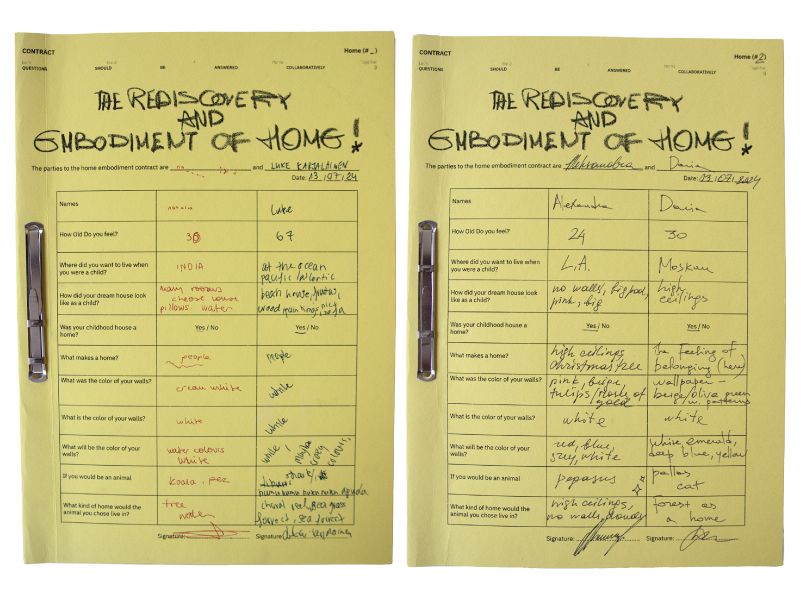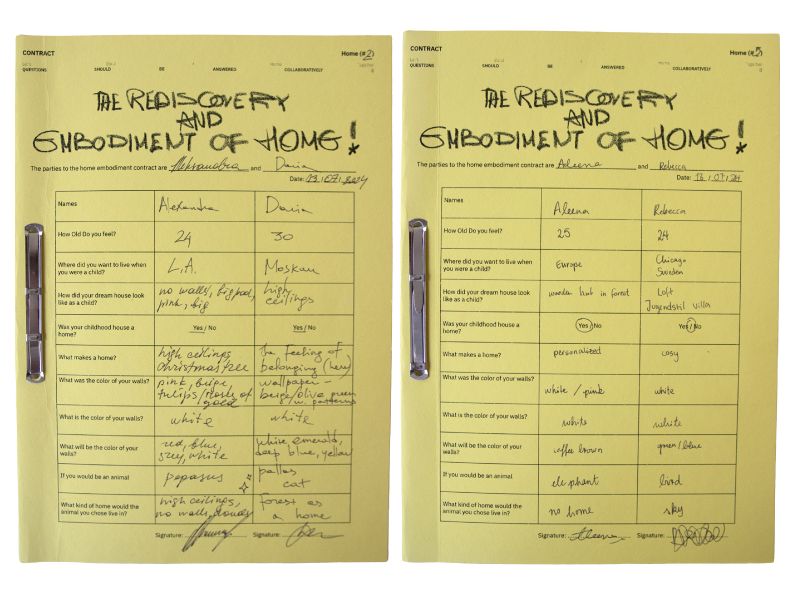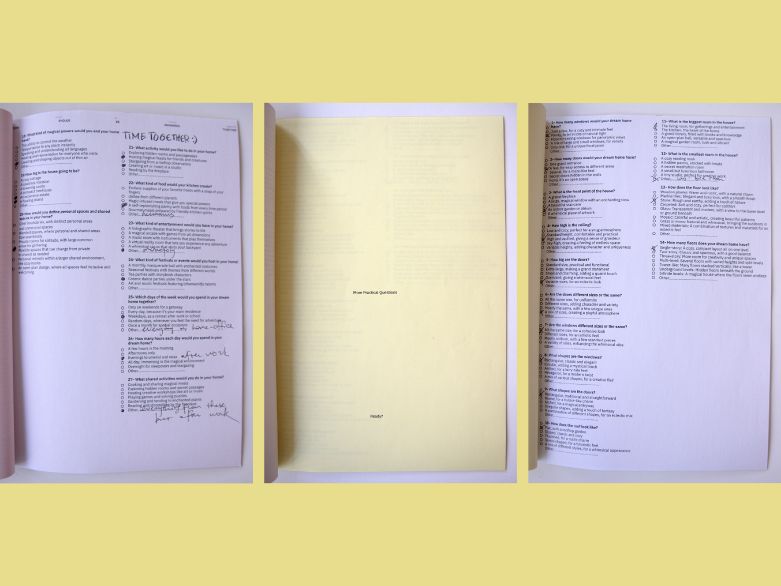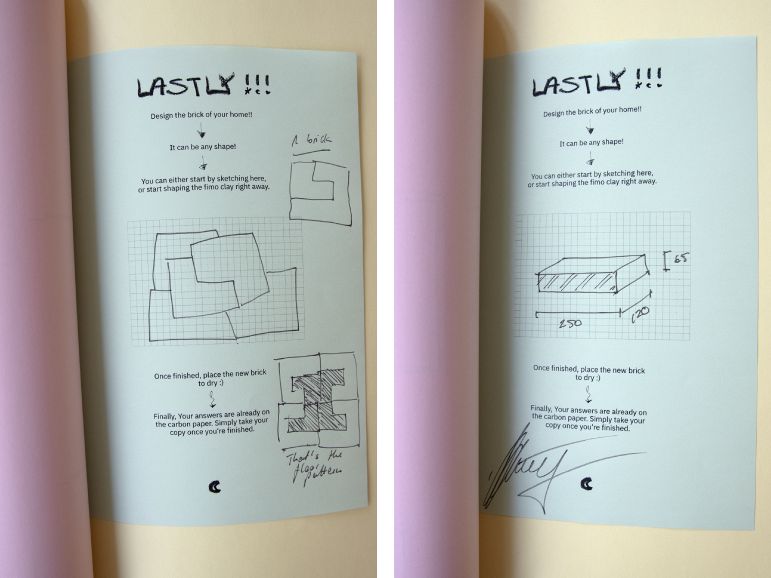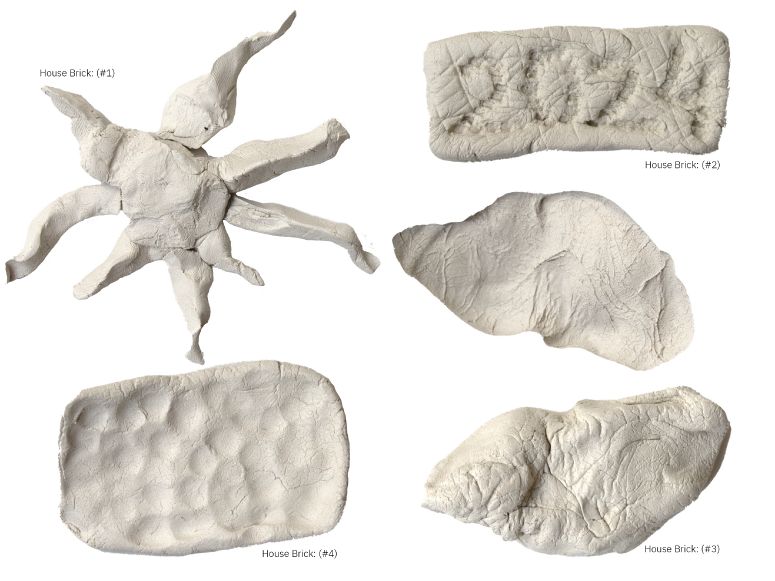|
|
| Line 10: |
Line 10: |
| On one hand, some worry about affordability, ownership, taxes, and investments, and on the other hand, for some, the unfortunate reality is not having a house to call home at all, being forcibly displaced, and living in places that no longer feel like home. | | On one hand, some worry about affordability, ownership, taxes, and investments, and on the other hand, for some, the unfortunate reality is not having a house to call home at all, being forcibly displaced, and living in places that no longer feel like home. |
|
| |
|
| [[File:A memory.jpg|thumb|1126x1126px|[[File:Shadows of leaves.jpg|thumb|926x926px|In this fort, I aimed to highlight the cyclical passage from childhood to adulthood and back again, emphasising how our fundamental desires for a home remain unchanged.]][[File:Fort1.jpg|thumb|813x813px|'''Participants were invited to enter the fort and collaborate on building a home, exploring the idea of what a home could be beyond their current realities. This experience encouraged them to reconnect with the personal and emotional significance of creating a space, reminiscent of the imaginative worlds they built as children. By focusing on their shared vision and memories, they could explore the essence of home in a way that transcends current obstacles and limitations, embracing a deeper, more imaginative understanding of what a home could be.''']][[File:Fort 2.jpg|thumb|808x808px|Participants who were somewhat familiar with each other generally exhibited more patience and willingness to engage in the process. This openness allowed them to connect on a slightly deeper level, with two participants even realising they could potentially live together in the future.On the other hand, for those who didn't know each other beforehand, the experience was more challenging. One participant left during the process, but the remaining participant chose to continue answering the questions on her own.]][[File:Green chair.jpg|thumb|802x802px|Some documents from the participants]][[File:Contract 1.jpg|thumb|803x803px|'''Documents:'''The documents outlines the collaborative experience of two participants as they work together to define and create their vision of a home.]][[File:Contract 2.jpg|thumb|801x801px]][[File:Contract 3.jpg|thumb|793x793px]][[File:Questionnaire 01.jpg|thumb|775x775px|'''1- Questionnaire Responses:''' Answers to a series of questions that explore each participant's preferences and ideas about what a home means to them. ]][[File:Questionnaire 02.jpg|thumb|781x781px]][[File:Questionnaire 03.jpg|thumb|780x780px|'''2- Design Sketches:''' Drawings or sketches that illustrate the home they designed together, based on their responses to the questionnaire.]][[File:Brick 1.jpg|thumb|772x772px|'''3- Creating A Brick:'''Participants design the brick of their house by using fimo, reflecting how it fits into the overall design and concept they developed.]][[File:Brick 2.jpg|thumb|771x771px]][[File:Bricks.jpg|thumb|775x775px]]]] | | [[File:A memory.jpg|thumb|1126x1126px|[[File:Shadows of leaves.jpg|thumb|816x816px|In this fort, I aimed to highlight the cyclical passage from childhood to adulthood and back again, emphasising how our fundamental desires for a home remain unchanged.]][[File:Fort1.jpg|thumb|813x813px|'''Participants were invited to enter the fort and collaborate on building a home, exploring the idea of what a home could be beyond their current realities. This experience encouraged them to reconnect with the personal and emotional significance of creating a space, reminiscent of the imaginative worlds they built as children. By focusing on their shared vision and memories, they could explore the essence of home in a way that transcends current obstacles and limitations, embracing a deeper, more imaginative understanding of what a home could be.''']][[File:Fort 2.jpg|thumb|808x808px|Participants who were somewhat familiar with each other generally exhibited more patience and willingness to engage in the process. This openness allowed them to connect on a slightly deeper level, with two participants even realising they could potentially live together in the future.On the other hand, for those who didn't know each other beforehand, the experience was more challenging. One participant left during the process, but the remaining participant chose to continue answering the questions on her own.]][[File:Green chair.jpg|thumb|802x802px|Some documents from the participants]][[File:Contract 1.jpg|thumb|803x803px|'''Documents:'''The documents outlines the collaborative experience of two participants as they work together to define and create their vision of a home.]][[File:Contract 2.jpg|thumb|801x801px]][[File:Contract 3.jpg|thumb|793x793px]][[File:Questionnaire 01.jpg|thumb|775x775px|'''1- Questionnaire Responses:''' Answers to a series of questions that explore each participant's preferences and ideas about what a home means to them. ]][[File:Questionnaire 02.jpg|thumb|781x781px]][[File:Questionnaire 03.jpg|thumb|780x780px|'''2- Design Sketches:''' Drawings or sketches that illustrate the home they designed together, based on their responses to the questionnaire.]][[File:Brick 1.jpg|thumb|772x772px|'''3- Creating A Brick:'''Participants design the brick of their house by using fimo, reflecting how it fits into the overall design and concept they developed.]][[File:Brick 2.jpg|thumb|771x771px]][[File:Bricks.jpg|thumb|775x775px]]]] |
REDISCOVERY AND EMBODIMENT OF HOME!
I believe the idea of home and nesting is inherently ingrained within us from birth, to belong somewhere, somehow, safely.
As children, we all played the game of constructing our personalised forts using bedsheets, chairs, and any available structures to form a secretive house. Only those we granted access were allowed inside. We instinctively dreamed of having a space that was truly ours, where we could create our own rules and privacy.
The idea of home never left our minds as we grew older; however, did the definition of what home is as adults shift?
On one hand, some worry about affordability, ownership, taxes, and investments, and on the other hand, for some, the unfortunate reality is not having a house to call home at all, being forcibly displaced, and living in places that no longer feel like home.
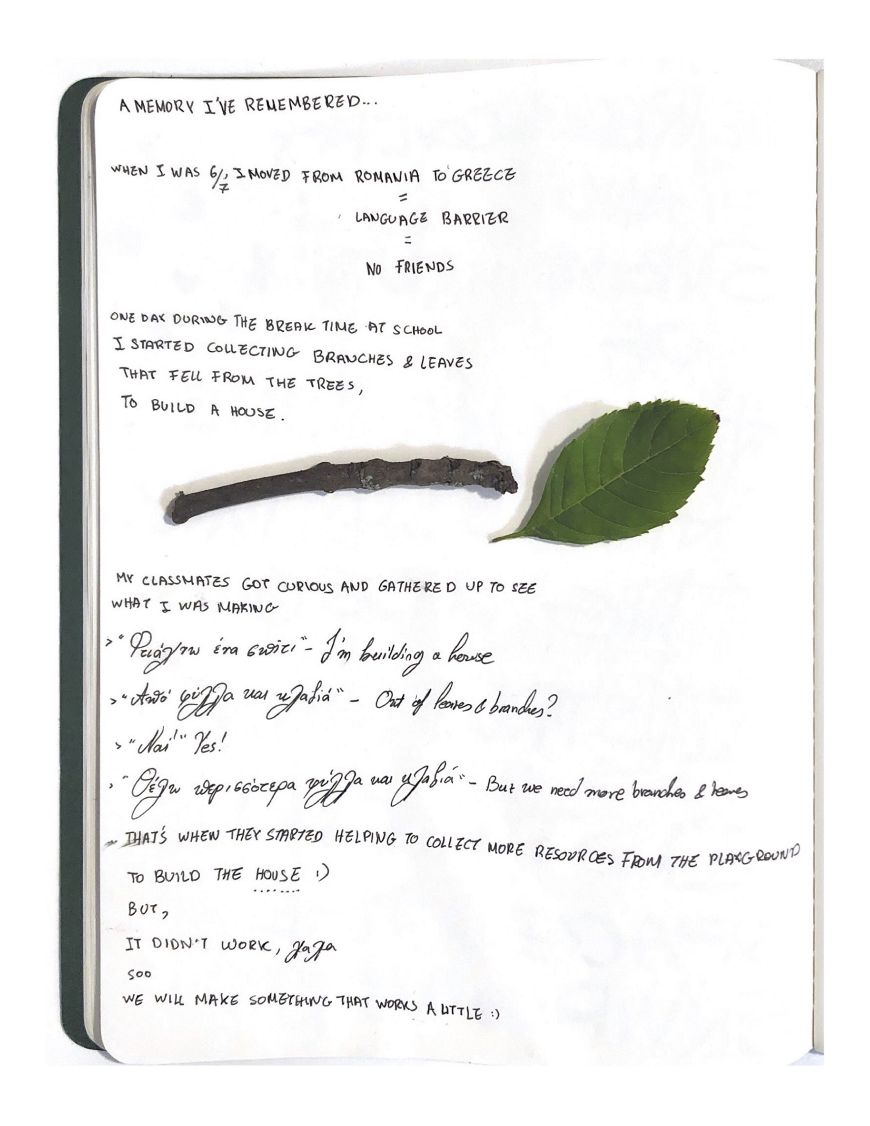
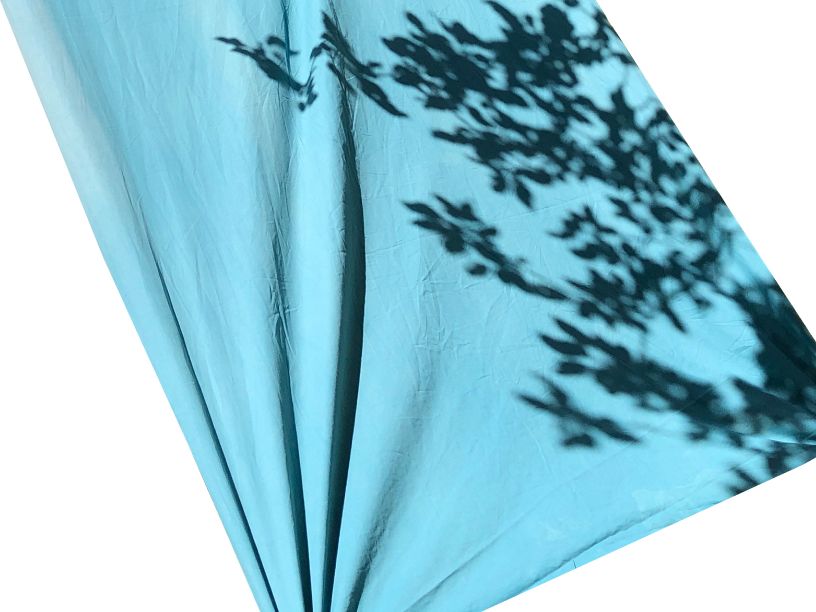
In this fort, I aimed to highlight the cyclical passage from childhood to adulthood and back again, emphasising how our fundamental desires for a home remain unchanged.
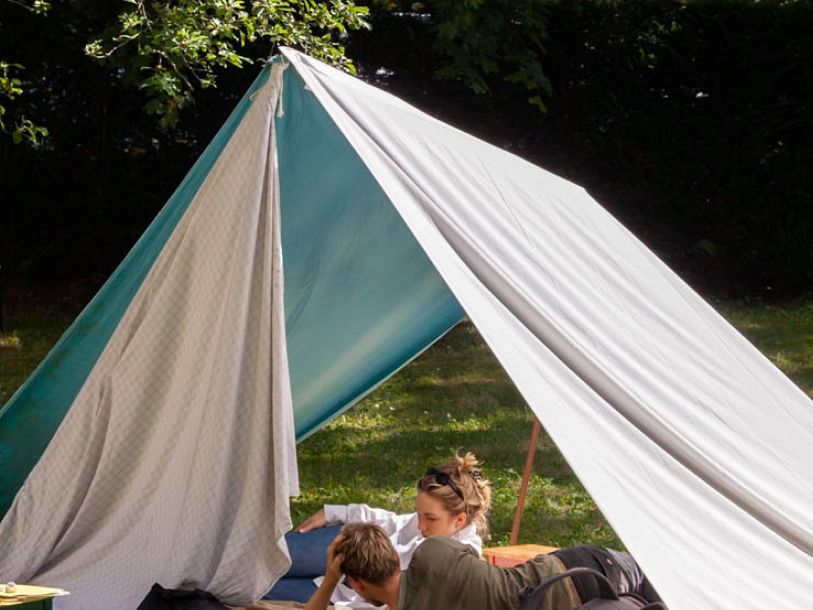
Participants were invited to enter the fort and collaborate on building a home, exploring the idea of what a home could be beyond their current realities. This experience encouraged them to reconnect with the personal and emotional significance of creating a space, reminiscent of the imaginative worlds they built as children. By focusing on their shared vision and memories, they could explore the essence of home in a way that transcends current obstacles and limitations, embracing a deeper, more imaginative understanding of what a home could be. 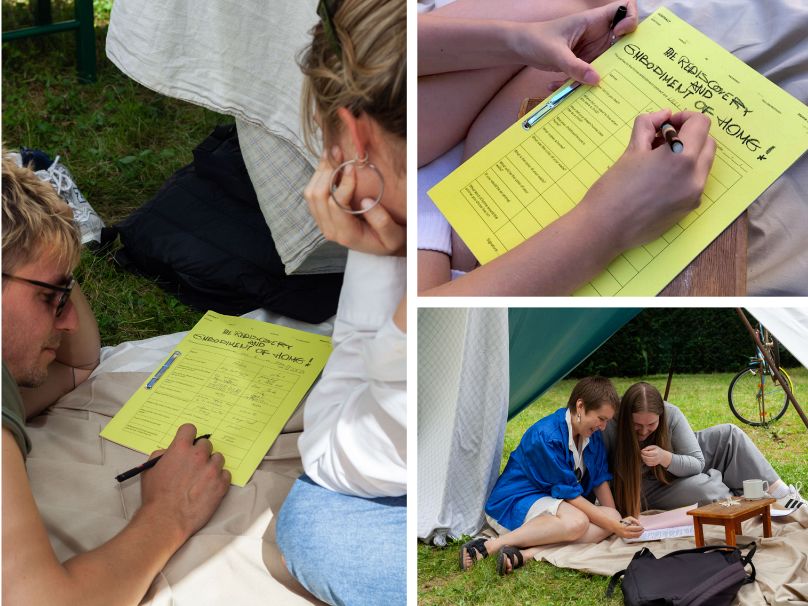
Participants who were somewhat familiar with each other generally exhibited more patience and willingness to engage in the process. This openness allowed them to connect on a slightly deeper level, with two participants even realising they could potentially live together in the future.On the other hand, for those who didn't know each other beforehand, the experience was more challenging. One participant left during the process, but the remaining participant chose to continue answering the questions on her own.
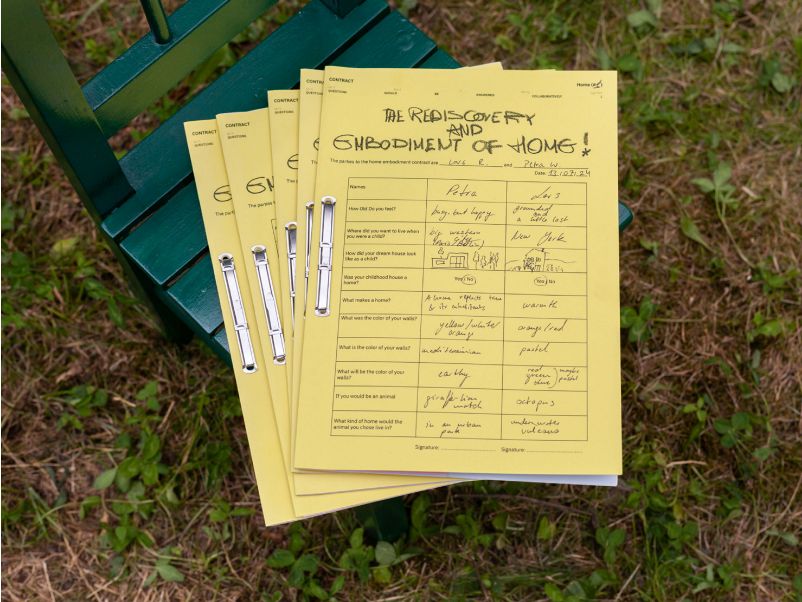
Some documents from the participants
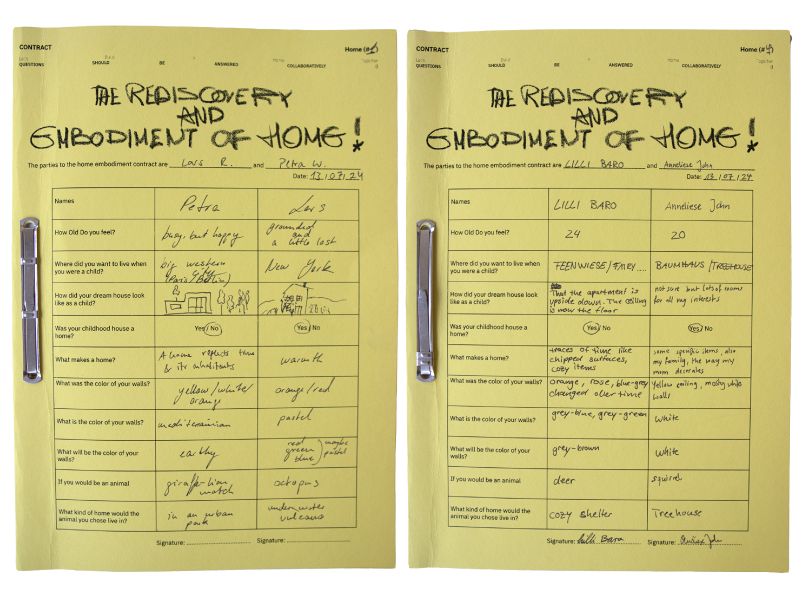
Documents:The documents outlines the collaborative experience of two participants as they work together to define and create their vision of a home.
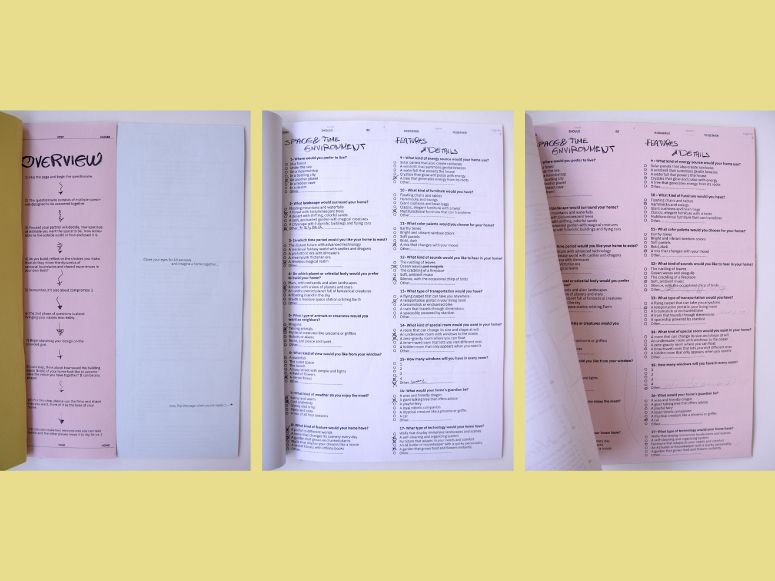
1- Questionnaire Responses: Answers to a series of questions that explore each participant's preferences and ideas about what a home means to them.
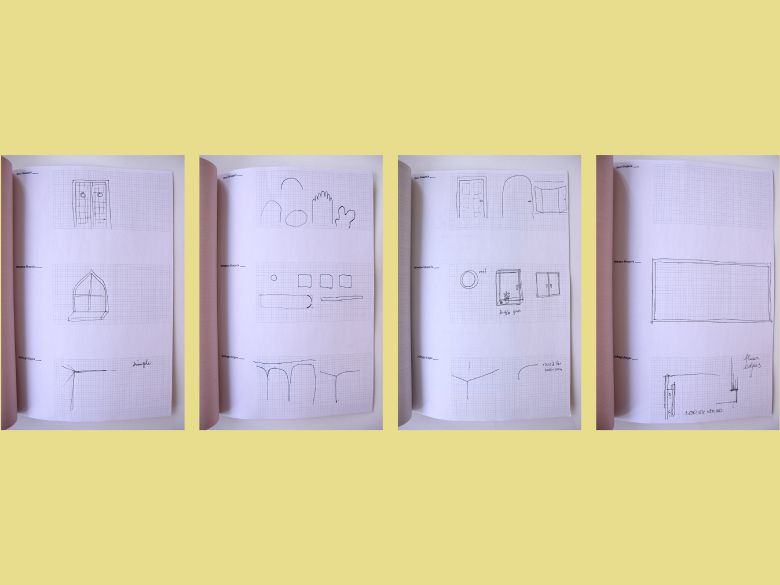
2- Design Sketches: Drawings or sketches that illustrate the home they designed together, based on their responses to the questionnaire.
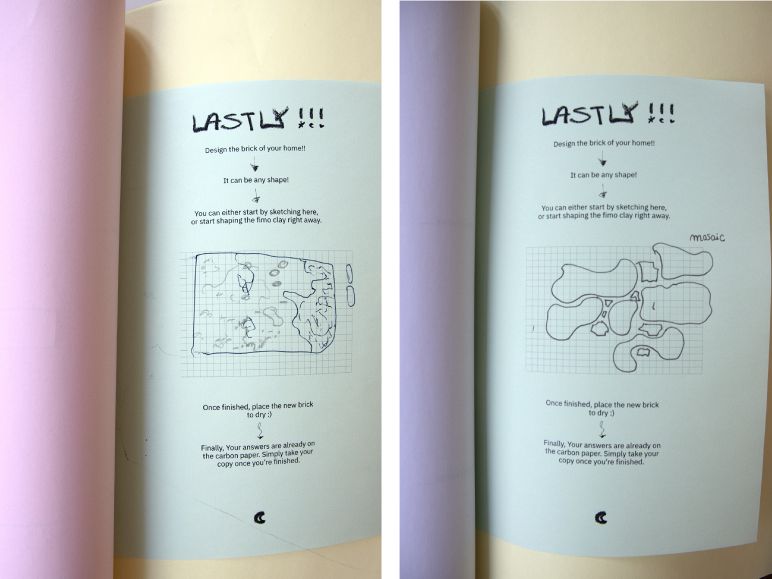
3- Creating A Brick:Participants design the brick of their house by using fimo, reflecting how it fits into the overall design and concept they developed.






